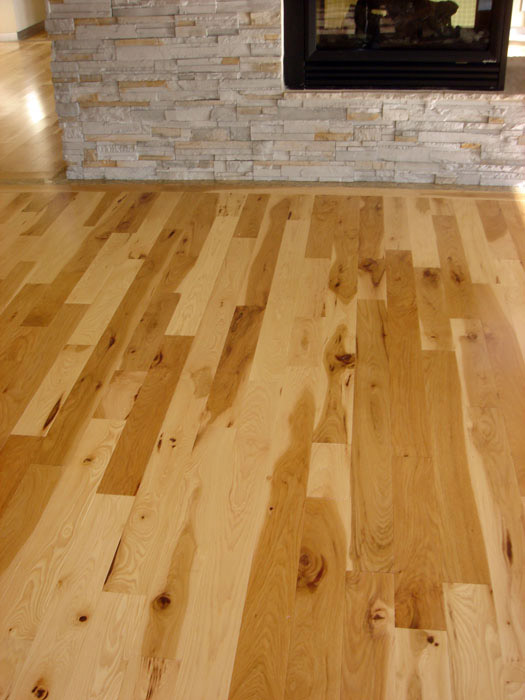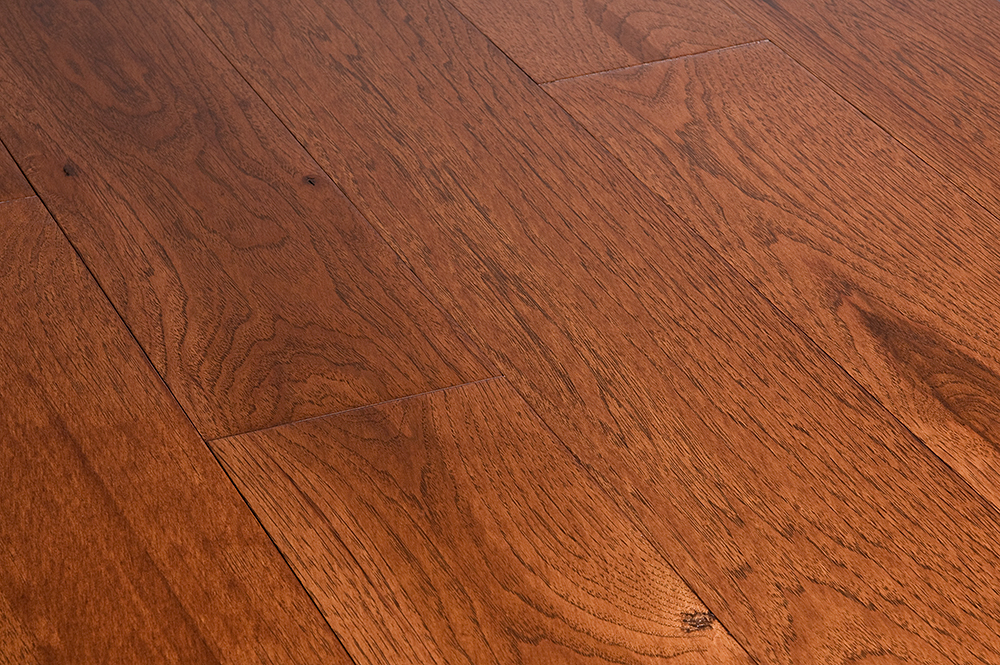 The first thing I personally think of when I hear ‘hickory’ is the country music and soul music that hails from the American South.
The first thing I personally think of when I hear ‘hickory’ is the country music and soul music that hails from the American South.
I think of Charlie Daniels’ tale of “A Devil Went Down To Georgia”, as the Devil jumps up on a hickory stump and says “boy, lemme tell ya what …”.
I think of Gram Parsons, while he was briefly with The Byrds, and his “Hickory Wind”, and O.C Smith’s “Son of Hickory Holler’s Tramp“, later recorded by Merle Haggard among many others. It’s the music geek in me, I guess.
There’s just something down-home about hickory.
Hickory stats
Latin name: Carya
Janka Hardness rating: 1820
Common color spectrum: white to yellow to gold to deep brown
Stability: medium (less than red oak)
Where does hickory come from?
Luckily, the associations with hickory follow pretty well, including where it thrives. Most species of hickory are found in those Southern United States from where so many of these kinds of musical references spring, also including States up the Eastern Seaboard. But, many species of hickory also grow in Asia, and the Asian sub-continent. It’s an extremely hardy species.
The associations of a down-home and casual feel where hickory is concerned are justified in another way as well; in the way it functions and the way it looks as hardwood flooring.
Hickory hardwood flooring characteristics
Hickory is the hardest domestic species there is, scoring a 1820 on the Janka Hardness scale. That’s comparable to tigerwood, and approaches the hardness of an exotic wood like Merbau. Hickory hardwood flooring is also known for it’s exceptional tensile strength and stability, which means that it’s not prone to warping and offers overall structural strength in the place it’s installed. Functionally, hickory is a stalwart addition to any space.
But, let’s get back to the idea of feel, and casual warmth that hickory seems to naturally evoke. Actually, let’s look at a picture:
This is an example of what hickory hardwood floors can look like, unstained. This shot is actually BuildDirect’s builders grade hickory hardwood flooring with a 6″ width, with that grade allowing for lots of “character” (color variation, some knots). Hickory is noted for reflecting lots of color variation no matter what the grade in this respect. This is what makes it a go-to for many who love the natural vibe in a hardwood floor.
But, given how much hickory serves this idea of a relaxed and effortless atmosphere for those of you looking to create a shabby chic look, or a traditional country feel in a space where you can listen to your Gram Parsons records, hickory is a pretty solid choice, literally and figuratively. Further to that, this languid and relaxed effect is strengthened significantly by that grain pattern, which is almost liquid in its appearance.
If this floor could talk, it would speak with a drawl.
Stained hickory hardwood flooring
For a wider range of options, hickory also takes stain well. And once again, instead of me writing a novel about it, here’s a another picture for you to consider:
Even though hickory is a dense wood, it takes stain well as is shown here. In this specific case, it’s been stained at the factory and featured as “Buckskin” stained hickory hardwood flooring, also in a 6″ wide board . Here you’re seeing that gorgeous grain pattern. But, for those of you looking to get that casual feel but still like a more uniform surface, hickory hardwood flooring can be good for that atmosphere, too.
If a Canadian can get away with saying it: there are options, y’all!
And if you invest in a clear finish today, and change your mind ten years from now, you can stain a natural hickory floor yourself. Just sand it first, as you would with any species.
We’ve got new hickory hardwood flooring
Well, it’s obvious by now.
But, the above are two of four new selections of hickory hardwood in both styles above, and in two different grades and board widths. The Builders grade of hickory hardwood floor board are, as mentioned above, 6″ wide. There’s a Standard grade of the above too, which offers fewer knot holes (always filled), and slightly less color variation, with 3″ boards.
Whichever you choose, you’re getting a floor that helps you get ready for the country, to sort of quote a Neil Young song, kind of.
That music geek thing is pretty persistent.
Cheers,
Rob.
![[object Object]](https://assets.builddirect.com/images/logo-blue.png?auto=format&fit=max&w=384)




















